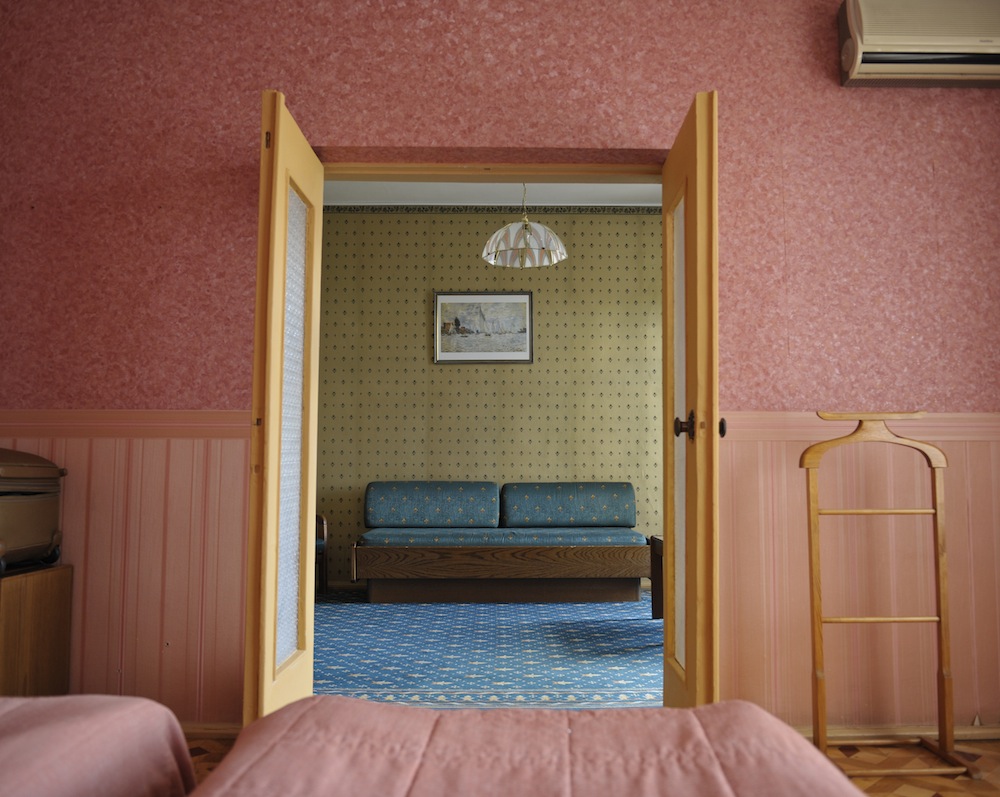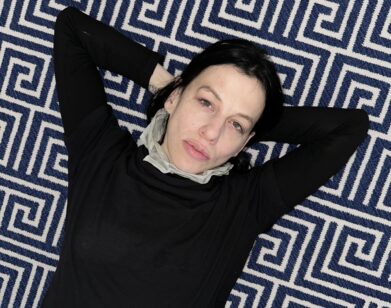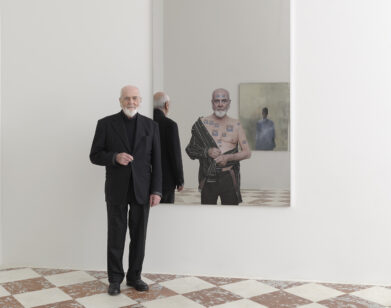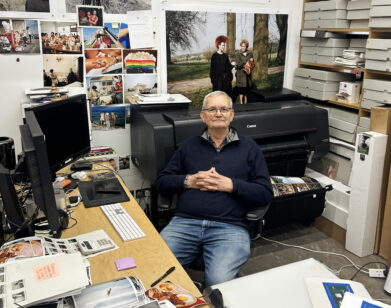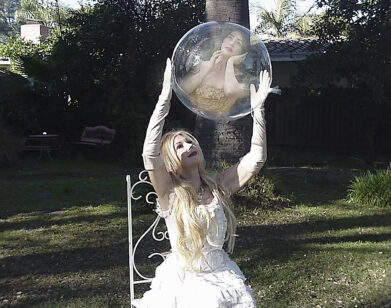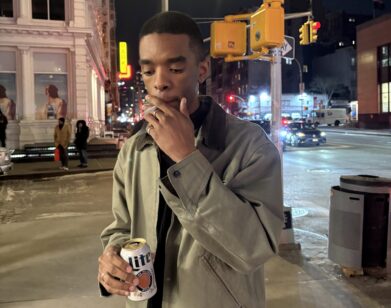Shore to Shore
In the 50-odd years that Stephen Shore has been making photographs, he’s put together a roving catalog based on something seemingly simple: the lay of the land. His interest in the nuances of daily life, and what they ultimately reveal, was cemented in his early series “American Surfaces,” in which he probed the depths of the symbols of the suburban landscape (cars, diner breakfasts, architectural landmarks) during cross-country road trips in the 1970s. His follow-up body of work, “Uncommon Places,” took his exploration of America and its aesthetic signifiers even further.
But the New York-born Shore—who received a darkroom set at age six, sold a photo to MoMA at 14, dropped out of high school to hang out at Warhol’s Factory during the heady ’60s, and showed at the Metropolitan Museum of Art at age 24—has amassed a far-reaching body of work that has traversed time and place, country and region.
His latest exhibition, which opens at 303 Gallery in New York tomorrow, puts Shore and his lens in foreign territory. On view are two separate bodies of work made in zones of itinerant conflict within the past five years—Israel and the West Bank, and Ukraine. The resulting photos excise an understanding of the sociological climate of lives lived against the backdrop of deeply-rooted political anguish, pulled into sharp relief by the recent happenings in both regions. The exhibition also opens shortly before Shore’s first comprehensive retrospective at the Fundación MAPRE in Madrid, which begins September 17, and will be accompanied by a new monograph from Aperture Foundation in October.
We spoke to Shore this summer by phone.
COLLEEN KELSEY: Why did you choose to travel to Israel and Ukraine in particular for the bodies of work on view at 303?
STEPHEN SHORE: I’ve been actually doing a lot of traveling in the past 25 years or so. In the late ’80s, I did projects in Scotland, and in the ’90s in the Yucatán. I went on [and photographed] three archaeological digs, two in Israel and one in Italy. I know that people think of my work from the ’70s as American, but I’ve been going to other places for a long time. The Israel project was actually commissioned. Twelve photographers were commissioned to go to Israel on the West Bank and essentially do whatever we wanted. Thomas Struth, Jeff Wall, Josef Koudelka, Wendy Ewald, Nick Waplington, Gilles Peress… I’m only naming half of them, but it’s a very impressive group. We had to make a number of trips over a two-year period. I made six trips.
This is what the work came out of. I realized that I couldn’t deal with all of what’s going on. It’s beyond the realm of photography and certainly beyond the realm of a single photographer. I think knowing that it was part of a larger project gave me the freedom to pursue what I was interested in—everyday life and the land. What does the land look like? Keeping in mind that as a background to all this, there is the conflict. It shows itself in various ways, in subtle ways, and obviously, as we’re seeing now.
Ukraine came about because my wife made me aware of a foundation that had been supporting Holocaust survivors in Ukraine and in a number of other Eastern European countries. As I read about them and the situation, I became very interested in them. And I read the history of that region, and the 20th-century history, became fascinated by just the immense tragedy of what went on beyond the Holocaust with Stalin. It went from Stalin to Hitler and back to Stalin. I felt that it left a mark not just on their lives, but on the land itself, and the villages.
KELSEY: Having traveled to these places and being American, and not a native, how do you think viewing the land through the eyes of a fresh observer, and decidedly not as a tourist, translated into the details that you noticed, and wanted to photograph?
SHORE: I think you really hit on something that was on my mind. As not a native, I have the advantage of not seeing scenes habitually. I can see things fresh. The danger is that you can wind up doing tourist pictures. I want to see it fresh and see the little bits of everyday life that a native might take for granted, but that are special to the place, while at the same time, not taking a picture that would be a tourist cliché. The other thing is that I’ve not photographed situations that are very emotionally charged in the past, and I was very aware going into both of these projects that I was dealing with a subject that was politically and emotionally loaded. That was part of the aesthetic challenge for me. In the West Bank it’s very political, and then when you get to the Ukraine, and just mention the word Holocaust, it just sends up emotional flares. How do I take a picture that doesn’t depend on that, but that deals with it?
KELSEY: Did you arrive at a conclusion on how to do that? Or was it something that was in flux?
SHORE: It was something that I had to keep in my mind the entire time, to be aware that I was in charged territories, and that there were all kinds of issues in it. Not just depending on it, avoiding exploiting it, too.
KELSEY: These two regions do have certain things in common, in different ways. What does the juxtaposition of them together entail for you? Does one body of work reveal things about the other?
SHORE: The Israel/West Bank work came first, and it was in that work that I made a transition from using a large-format camera to a very high-quality digital camera. Half of it is 8×10, and half of it is digital. It was the first time I used this digital camera. It’s fascinating because the quality is so good that I can, in a sense, have a camera the size of a 35mm that I can use as fluidly as a 35mm but gives a result and looks like I might have used a 4×5 view camera. The tonality is that good, and the detail is that good, so it produces a kind of picture that 10 years ago couldn’t have existed. It just was not possible. It expanded my aesthetic method, really. When I understood what this camera could do, I then devoted my attention to that. That led visually to all the work, in a certain way, that I did in Ukraine. The other reason for the juxtaposition is simple—these were just the most recent projects. It’s just by chance that these are two countries that are in the news all the time now.
KELSEY: I’m sure what’s been happening in the news for the past year or so has affected how you view these photographs now.
SHORE: I think that’s inevitable. But I think that maybe more so the Israel/West Bank pictures because that conflict that can be understood and read in those pictures, whereas the Ukraine work, aside from one photograph I have with graffiti about that says “Fuck you” that’s written by a separatist, there’s no sign of that conflict. These pictures are about a different history of conflict and tragedy. I mean, the history of Ukraine, from 1930 to 1950 roughly, is just as tragic as any place I’ve ever heard about.
KELSEY: How do you feel about putting out an exhibition of newer work and then almost concurrently, having a retrospective? Has there been anything about how you’ve approached your work since you’ve started making photographs that you’ve learned from putting these exhibitions together?
SHORE: I’m always interested in finding new aesthetic problems to deal with and challenge myself, even if the aesthetic problem is one of content, like how do I deal with something that’s as charged as Ukraine? I view that as an aesthetic problem. With the two exhibitions, the one at 303 is entirely work done within the past five years and the one in Spain goes up to work I did in Ukraine and in Winslow, Arizona last fall, and has a lot of work from the ’90s and the last decade, landscapes of the ’80s. The most amount of work is in the ’70s, “American Surfaces” and “Uncommon Places.” Although it has “American Surfaces” and “Uncommon Places,” they’re a part of a much larger exhibition. I’m grateful to see that it’s not just the same work being shown.
KELSEY: What is your typical everyday practice like?
SHORE: I’m also a teacher. I’ve been the head of the photography program at Bard College for over 30 years, and I take that as seriously as I do my photography. My time is devoted to that too. One thing I’ve been doing in the past month and a half is an Instagram feed—which I love. I think I misunderstood Instagram and just thought it was people photographing their friends, and discovered there were a number of people, a number of artists, who were taking it very seriously and doing very imaginative work with Instagram as the medium. The first person that comes to mind, whose work I find really impressive, is Peter Halley. I found it fascinating. I like new means of communication. When I first started producing print-on-demand books, I was five years just working with that. A lot of the photography I’m doing and thinking about at the moment is directed at Instagram.
KELSEY: I think that everyone has a certain idea about what photography can be and what it can tell us about real life or what the purpose of a photograph is or what it isn’t. How do you feel about that now? Has it changed since you first started taking photographs?
SHORE: I think most serious photographers understand that there’s this large gap between the world and how the world looks through a photograph. There’s something essentially fictive about a photograph. That doesn’t mean that if you understand that, and you understand how the world is transformed by the camera, that you can’t use the limitations or the transformation to have an observation that is a very subtle perception of the world. I realize that as I get more experience as I get older, my perception changes and that feeds the photograph. The other thing which I’ve known all along, is that a work can do many things at once, and it doesn’t have to be just about the world, it could also be about photography, it could be about perception, it could be an exploration of the medium. It could be a document, it could be a visual poetry, and it could be a formal exploration all at the same time.
“STEPHEN SHORE” RUNS THROUGH NOVEMBER 14 AT 303 GALLERY, 507 WEST 24TH STREET, NEW YORK.

